To row with power you need to have your feet firmly braced against something solid enough to take your full weight. In some traditional boats you can get by with the internal structure. Sawn frames across the bottom usually have enough height to offer a good purchase and sometimes you can get most of your foot on a side frame. Even something smaller can be useful. My cross-planked skiff has a short keelson (just the skeg is fastened to it) that gives me a spot to brace with one heel. It works for short distances; for longer rows I have a short brace for both feet that bears on the keelson and the chines.
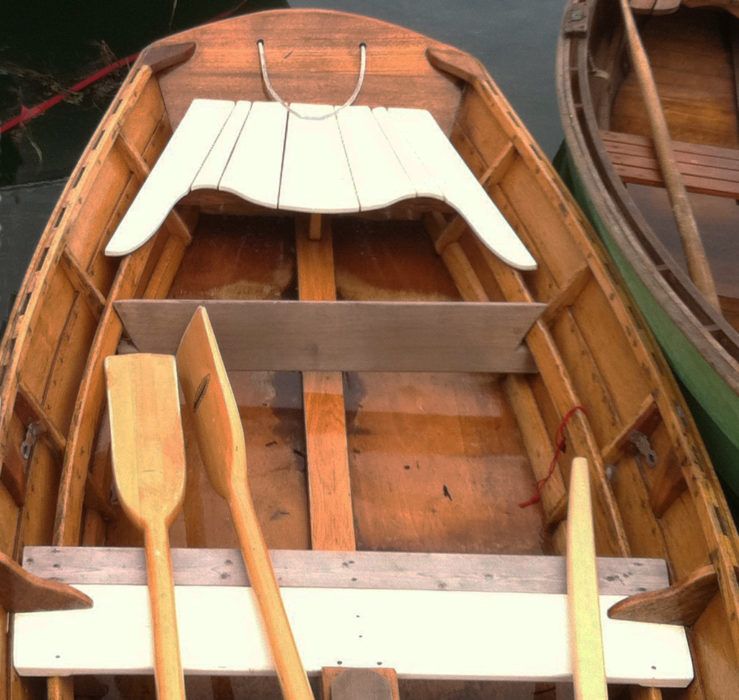 Ben Fuller
Ben FullerThis flat-bottomed skiff has a footboard fit around the risers and resting against a frame.
A better arrangement is in a friend’s Good Little Skiff. His brace rests on the chines and seat risers and provides full foot support. He often rows all day long on many of his trips. If your boat doesn’t have some interior structure that you can use, it’s well worth installing an arrangement for bracing your feet.
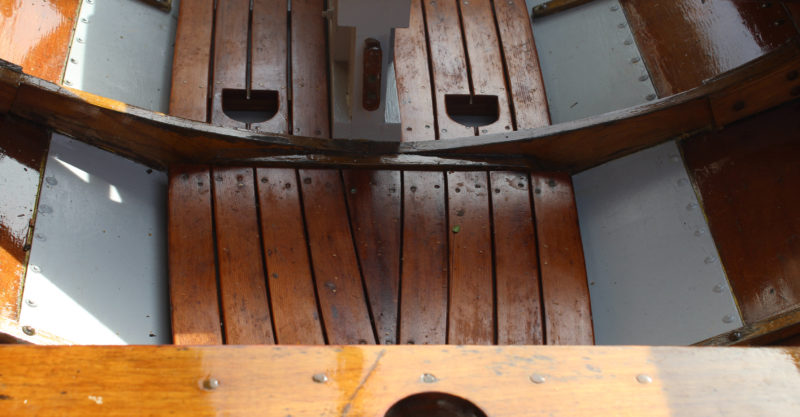 SBM
SBMThe heel holes in this Chamberlain gunning dory’s floorboards have an extra cleat to keep the corners of the cutouts from splitting.
A pair of heel holes is a very simple option for boat with floorboards. The holes are best set up to span two boards; holes that are cut through only part of each board can be reinforced by a single cleat underneath the hole. If your boat is rowed by people with different leg lengths, you can have several pairs of holes. If you feel the need for a broader surface to push against, you can add heel-brace blocks. They’re small pieces of wood fastened on top of the floorboards. Their sides and aft ends are rounded down to minimize intrusion, and shaped like oval or Gothic arches they can be quite elegant.
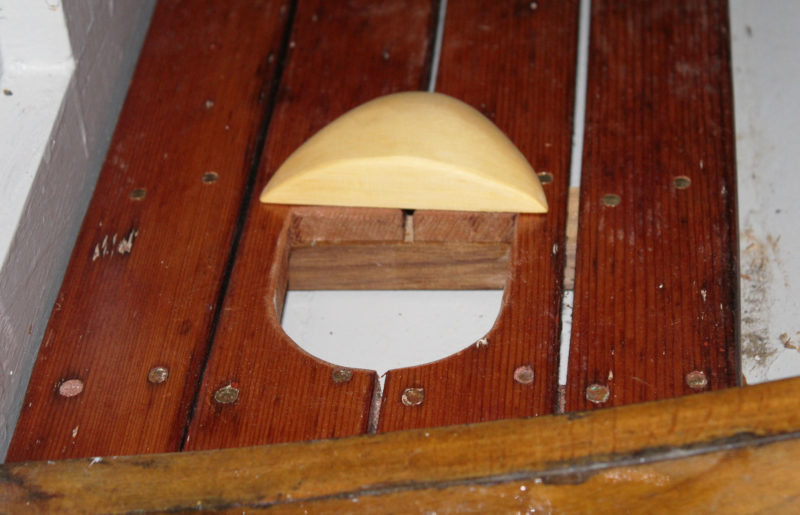 SBM
SBMHeel blocks, contoured to minimize snags and trips, can give a heel hole a broader area of contact.
Delaware watermen liked to keep their weight low in the boat, so the cleats that joined the floorboards were on top, and the floor flats, as they called them, rested on the slender steam-bent frames. One of the cleats served as a heel brace. The boxes they used for seats could be moved to adjust for leg length. A similar cleat secured to floorboards (or directly to the bottom if there are no floorboards) is a common and easily installed brace.
A stretcher is a bar running across the boat and supporting the feet higher up. Crossbars that make a narrow contact with just the instep or ball of the foot, like heel braces, work well for rowing a few miles around a harbor or a modest poke up a creek, but your feet will be grateful for a full foot brace if you race or want to cover serious miles. (Early Thames gig rowers did row all day with a plain stretcher but wore their footplates—sturdy boots.) Thames wherries have cross-boat foot plates that span the whole foot vertically, and the width of the boat horizontally. With them you can move your feet to the center or out to the sides to change position.
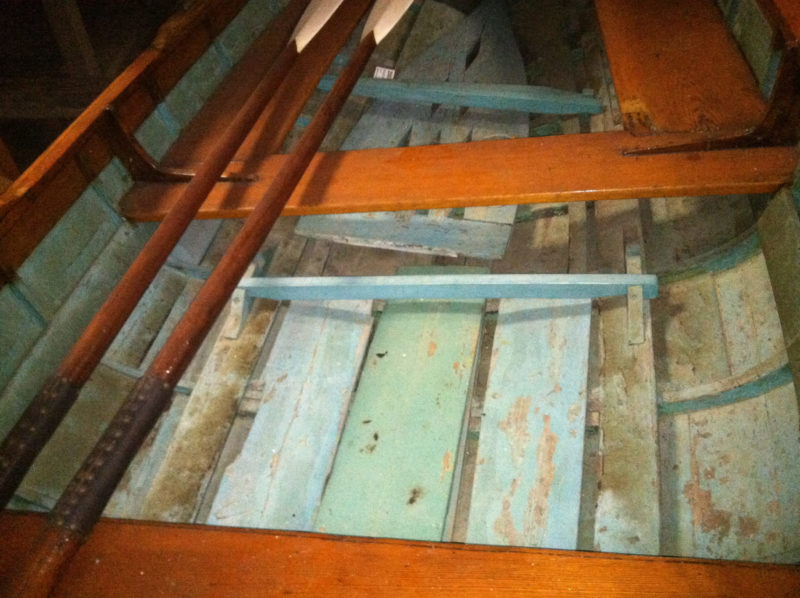 Ben Fuller
Ben FullerQUEEN BEE, a pulling boat built around 1900 and now in the Mystic Seaport Museum collection, has square stretchers that drop into notched cleats screwed to the floorboards
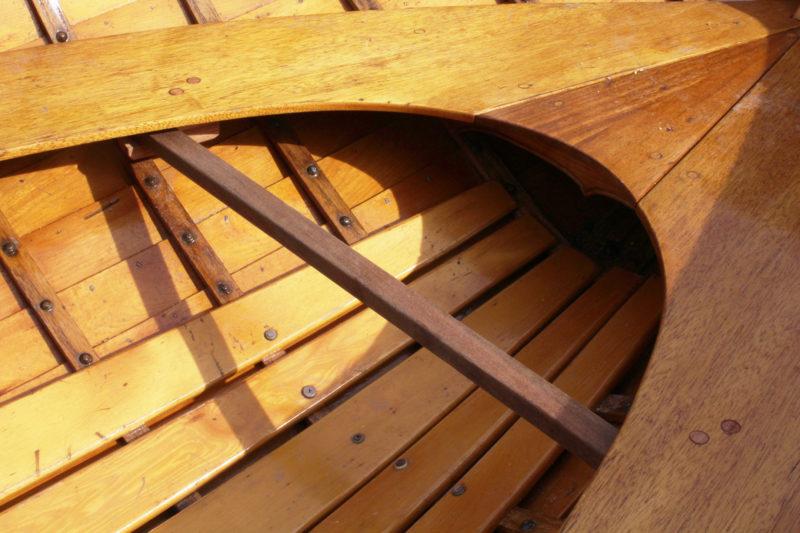 SBM
SBMStern sheets can provide an easy way to add a stretcher. Simple L-shaped blocks hold an easily removable hardwood bar.
If others row your boat, adjustable stretchers are useful. Most traditional boats had no more than three options and two may be all you need. Thames skiffs had stringers running between frames and cleats fastened to them at different positions. More common is a couple of notched pieces secured nearer the boat bottom to support a low crossbar for your heels or instep. The bar is removable, but the pieces supporting it are not and can get in the way.
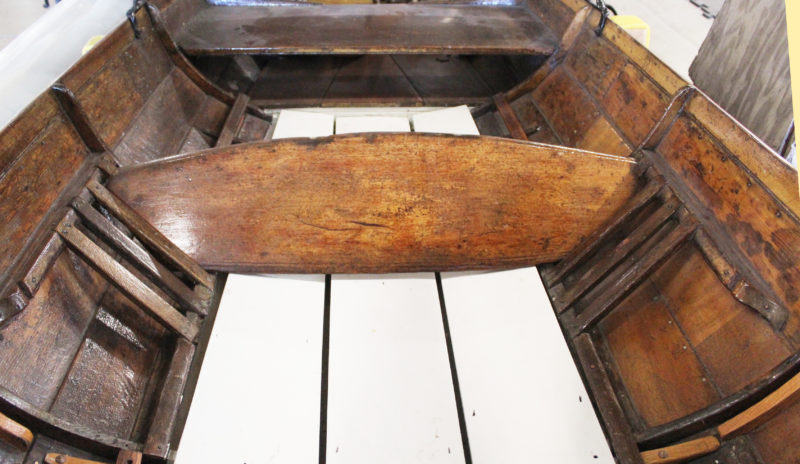 SBM
SBMThis full footboard is in a late 19th-century wherry built in Shrewsbury, England. Four slats offer three positions to adjust for leg length.
For modern glued-lap plywood boats, notched supports can be glued to the sides. These work especially well on boats with side buoyancy compartments. Their vertical surfaces are well suited for mounting the plates. A round cross bar can support a foot-sized plate with its bottom edge is resting on the floorboards. The plate is cut to a length to provide a comfortable angle; it pivots to the different angle at each position. The supports work best if there is not much taper to the sides of the boat where they’re attached, or if there is not much fore-and-aft range to the adjustment required. A support an inch or so thick can accommodate the stretcher bar over a short fore-and-aft span without being too intrusive.
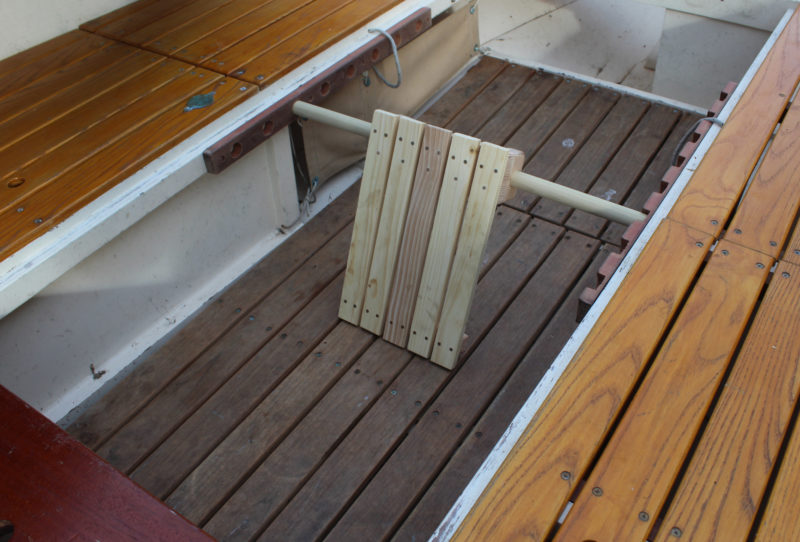 SBM
SBMThe side benches in this plywood boat have parallel sides so the supports for the stretcher can be long and serve two closely-spaced rowing stations. The holes in the port-side support are notched for removing the dowel.
Another type of adjustable brace is anchored to the floorboards. It usually has a flat base and a foot plate set at a comfortable angle. These work best where bolts can go through gaps between floorboards. With the bolts set in a crosspiece beneath the floorboards, the brace gets clamped down with wing nuts. I made a set of these for my dory. They give my feet full support and are easily removed.
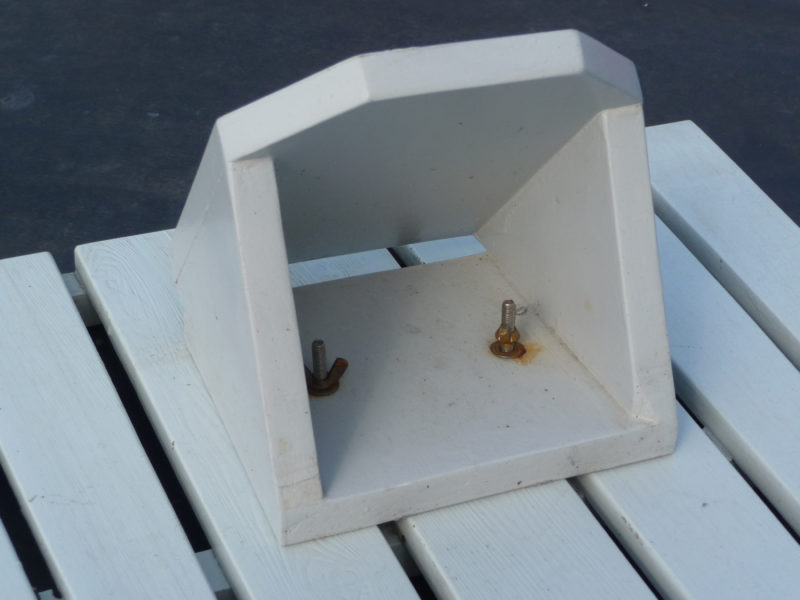 Ben Fuller
Ben FullerThe footbrace in the author’s dory is adjustable and removable by means of bolts that slip between floorboards to a sliding crosspiece.
On RANTAN, my oar-and-sail boat, I have adjustable foot braces attached to tracks used for the stretchers in modern sliding-seat racing boats. I cut slots in the floorboards and fastened little plates under them so the tracks would lie flush with the top surface.
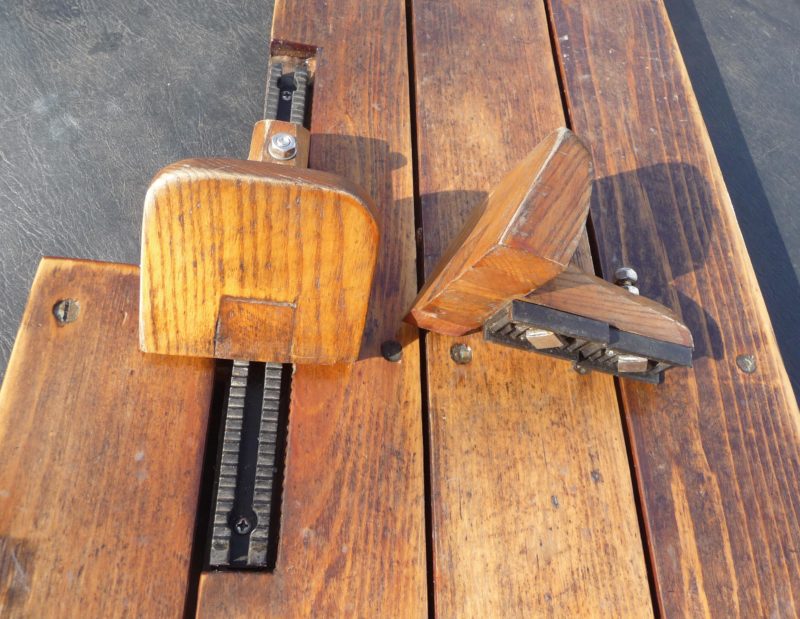 Ben Fuller
Ben FullerThe heel brace in the author’s Dias Harrier, RANTAN, is fixed to a single racing-shell stretcher track set in the floorboards. The fine adjustment it offers may not be needed by most rowers.
What could be called a trapeze brace doesn’t require making any modifications to the boat. It is a length of line with its ends tied to the rowing thwart. The lines could also come back to clam cleats under the rowing thwart. You can brace your feet directly against the loop or tie a fender into the line as a more comfortable footrest. Another version of the trapeze brace is made of webbing or other low stretch line threaded through slots or holes in a wooden bar. Buckles or knots can provide adjustability and make it readily removable.
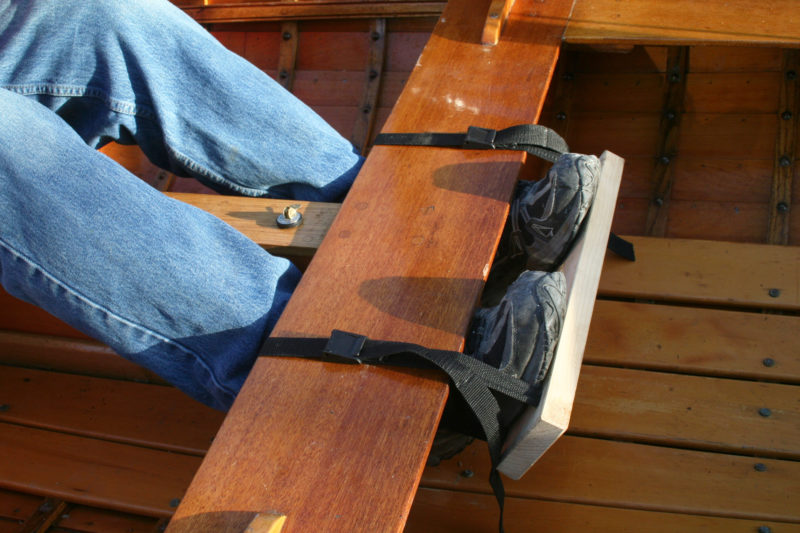 SBM
SBMTwo straps and a simple footboard with four slots for the webbing make a trapeze stretcher.
There are lots of options from heel supports for occasional rowing to full foot braces for racing or full days of rowing. They all make a significant difference over going without.![]()
Ben Fuller, curator of the Penobscot Marine Museum in Searsport, Maine, has been messing about in small boats for a very long time. He is owned by a dozen or more boats ranging from an International Canoe to a faering.
You can share your tricks of the trade with other Small Boats Monthly readers by sending us an email.
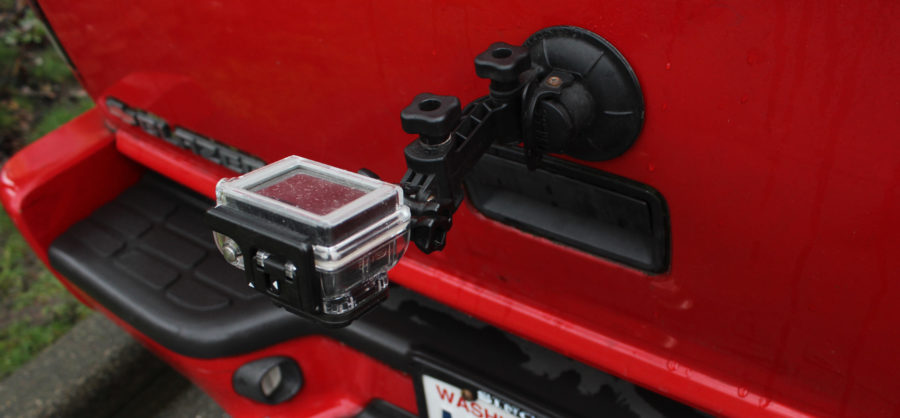
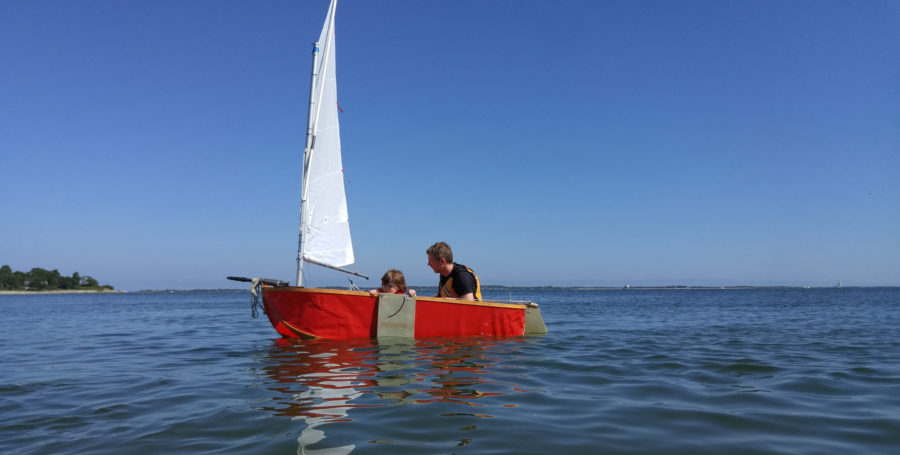
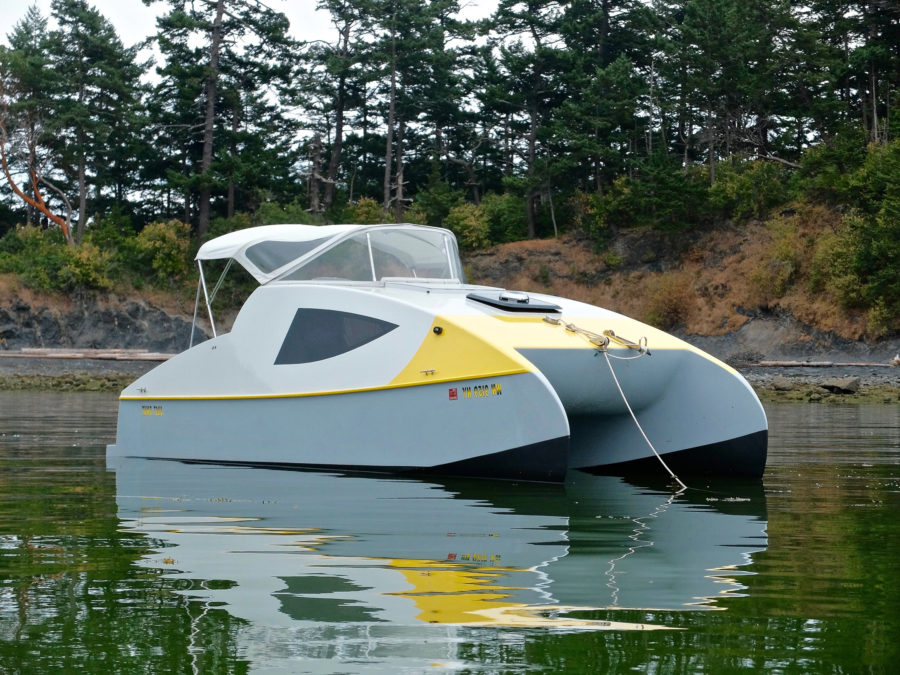
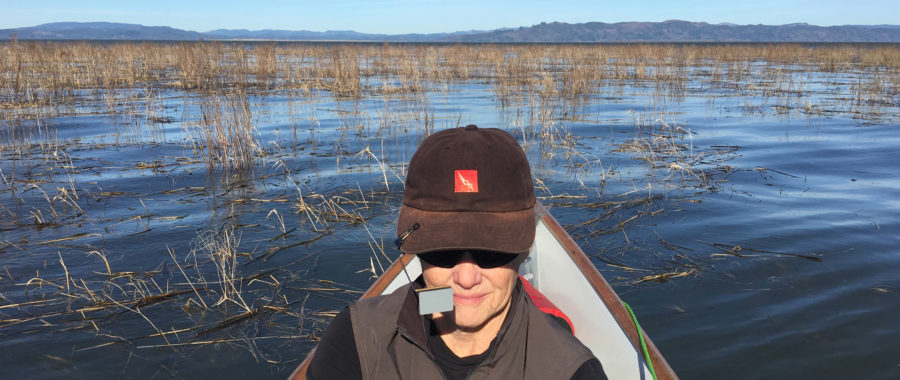
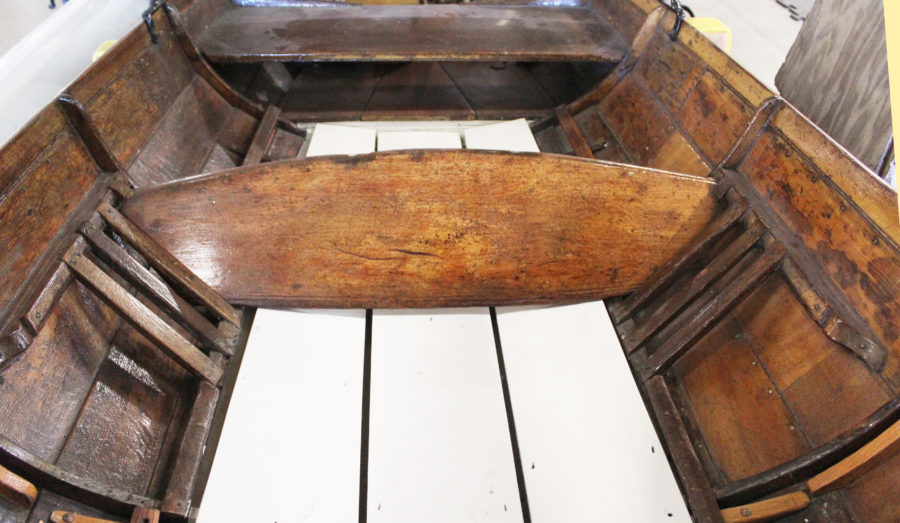
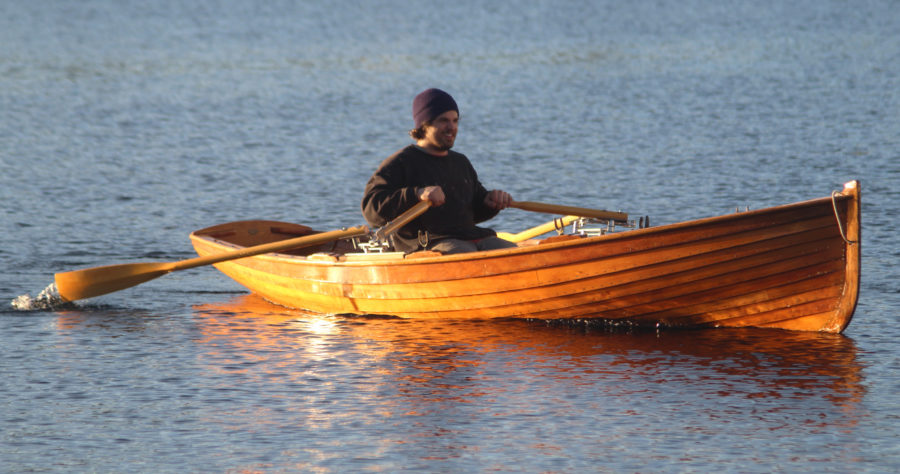
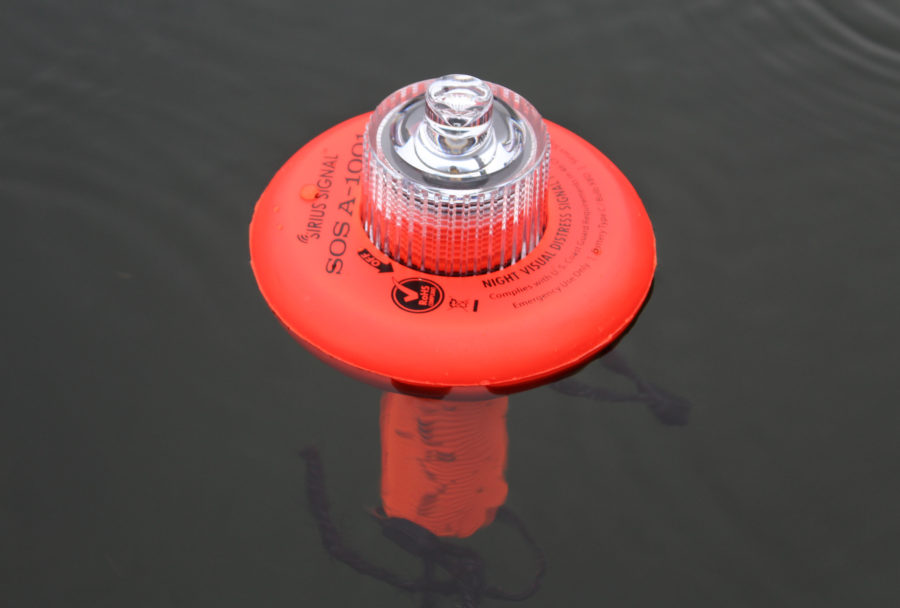
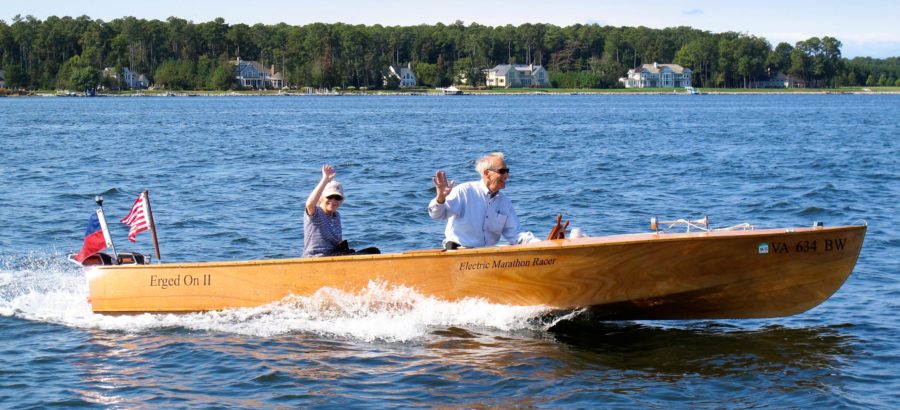

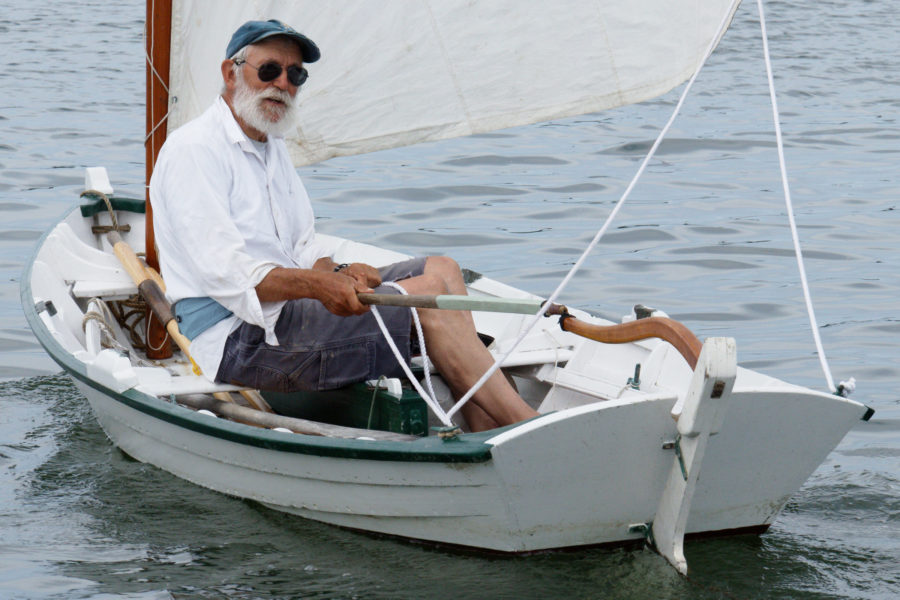
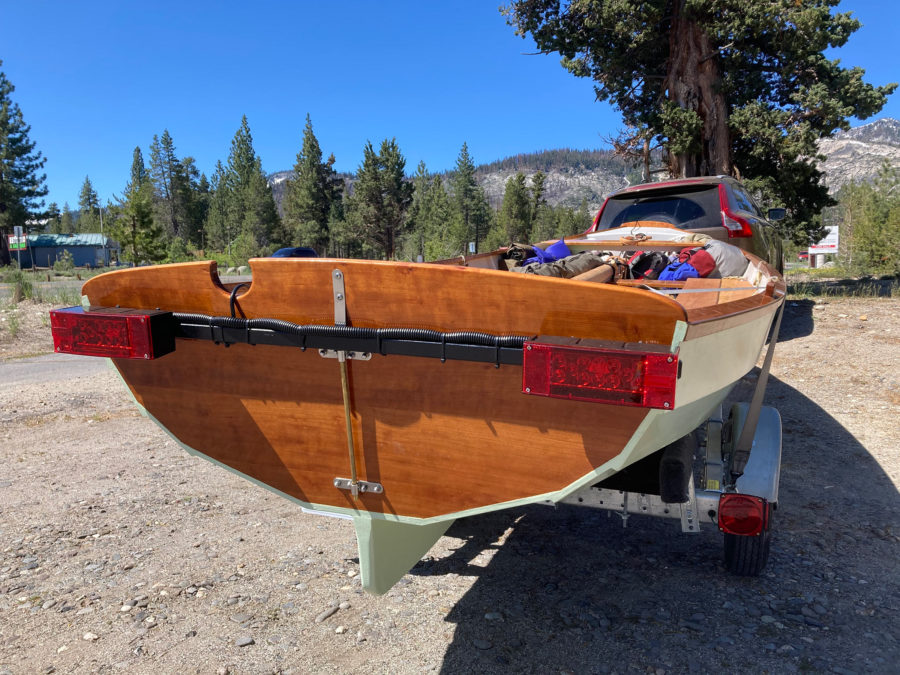
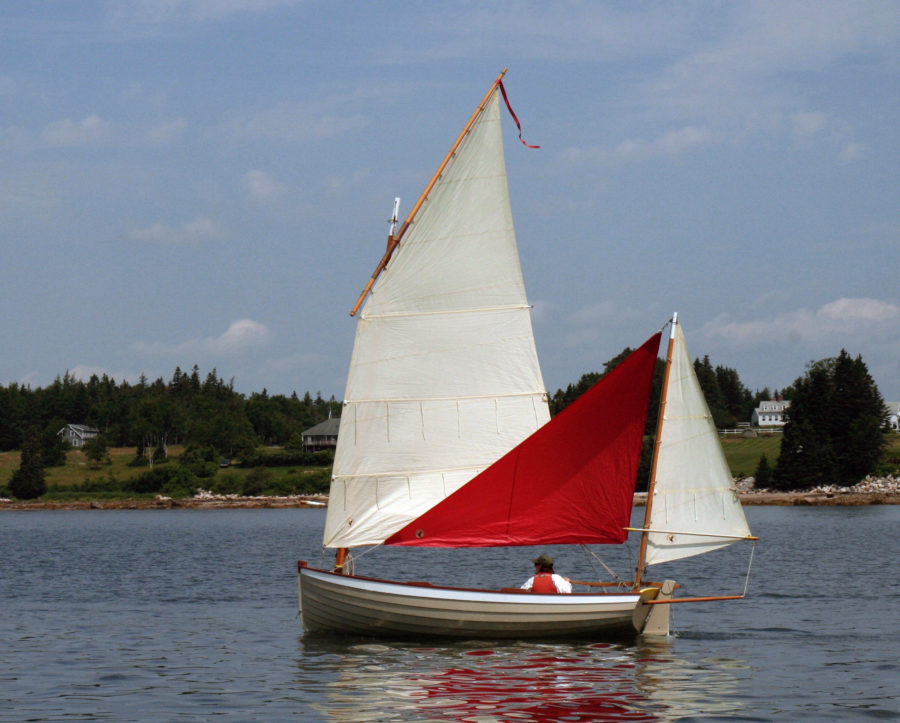
There are probably as many designs for foot braces as there are rowers. I use this brace in my Ross Lillistone Flint. The front end of the “false keelson” is held down with a wedge tapped under a cleat on the bulkhead (at left) and the foot brace itself is adjusted with two wing nuts similar to Ben’s brace.
The article here will get me moving on a project (like I need another one!). I will finally put in a set of foot braces in my 17′ faering. Thanks for the push.
With foot stretchers and pulling hard, you may still want to add foot straps so that you can use a longer stroke without worrying about falling over backwards.